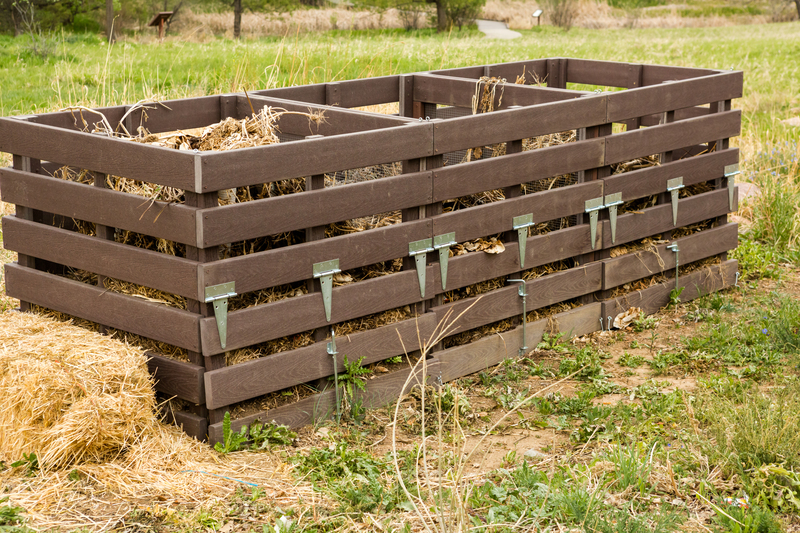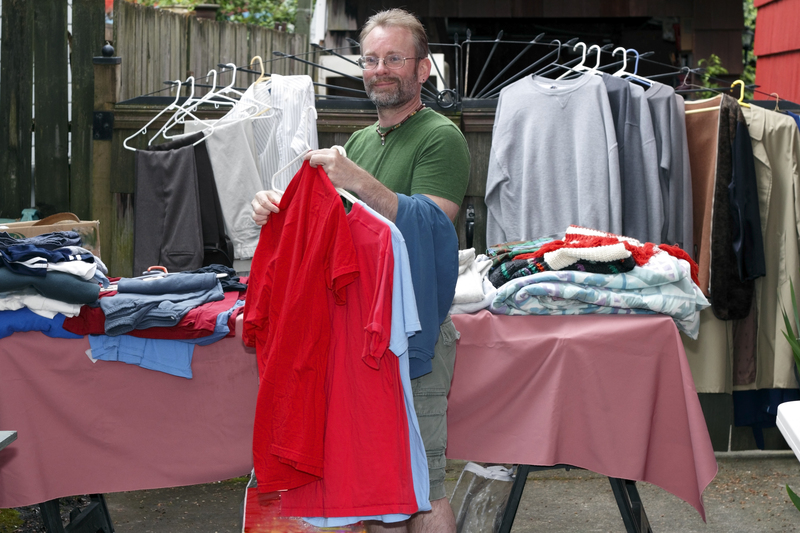Say No to These Toxic Plastics: Safeguard Your Health and the Environment
Plastic pollution is a growing global concern, but not all plastics are created equal. Among the different varieties of plastics, some are classified as particularly hazardous to human health and the environment. Understanding which plastics are toxic--and why you should avoid them--is crucial in making safer choices for you, your loved ones, and the planet. In this comprehensive article, we'll break down the key toxic plastics, uncover the reasons behind their dangers, and offer practical tips to say no to toxic plastics in your everyday life.

Why Are Some Plastics Considered Toxic?
Plastics are synthetic materials made from polymers, often combined with various additives to enhance durability, flexibility, or color. However, many of these additives--including phthalates, bisphenol A (BPA), and heavy metals--can leach into food, beverages, and the environment, posing health risks to humans and wildlife. Toxic plastics are not just an environmental nuisance--they have been linked to a range of serious health problems, including hormone disruption, cancer, and developmental issues.
Understanding Resin Identification Codes
Plastic containers often display a triangle-shaped recycling symbol with a number inside, known as the Resin Identification Code (RIC). This number helps identify the type of plastic used. Not all plastics are equally problematic, so learning what these codes mean is the first step toward saying no to toxic plastics.
- 1 - PET or PETE (Polyethylene Terephthalate)
- 2 - HDPE (High-Density Polyethylene)
- 3 - PVC (Polyvinyl Chloride)
- 4 - LDPE (Low-Density Polyethylene)
- 5 - PP (Polypropylene)
- 6 - PS (Polystyrene)
- 7 - Other (Various Plastics, including Polycarbonate)
Toxic Plastics to Watch Out For
Let's zero in on the most problematic plastics so you can actively avoid these toxic materials:
1. Polyvinyl Chloride (PVC) - Resin Code #3
PVC is one of the most widely used--and most dangerous--plastics. Found in everything from food packaging and toys to plumbing pipes, PVC contains numerous additives including phthalates and lead-based stabilizers. When heated or incinerated, PVC releases dioxins, some of the most potent carcinogens known.
Why PVC Is Toxic:- Leaches phthalates - Hormone-disrupting chemicals that can affect reproductive health and development.
- Releases dioxins when burned - Highly toxic compounds that persist in the environment.
- Non-recyclable in most communities, leading to land and water pollution.
- Cling films
- Blister packaging (medications, electronics)
- Plumbing pipes, window frames
- Children's toys
2. Polystyrene (PS) - Resin Code #6
Polystyrene--often sold as "Styrofoam"--is notorious for its adverse environmental and health effects. Used in disposable coffee cups, food containers, and packing peanuts, PS contains styrene, a potentially carcinogenic substance that can migrate into food and drinks, especially when heated.
Risks of Polystyrene:- Potential neurotoxin - Styrene exposure can affect the nervous system.
- Linked to cancer in animal studies.
- Highly resistant to degradation; persists in landfill and oceans as microplastics.
- Disposable cups and plates
- Takeaway food containers
- Packing peanuts, insulation
3. Polycarbonate and "Other" Plastics - Resin Code #7
Category #7 includes various plastics, notably polycarbonate, which contains bisphenol A (BPA). BPA is a chemical known to disrupt the endocrine system, mimicking estrogen and potentially triggering numerous health problems.
Dangers of Polycarbonate:- BPA leaching - Especially when containers are heated or scratched.
- Linked to hormonal imbalances, reproductive harm, and increased risk of certain cancers.
- Not easily recyclable or accepted in municipal recycling bins.
- Reusable water bottles and baby bottles (though BPA-free options now exist)
- Large water cooler jugs
- Food storage containers, linings of metal cans
Hidden Dangers: Toxic Additives in Plastics
Many toxic plastics contain additional harmful chemicals, making them even more hazardous:
Phthalates
- Used to soften plastics, especially PVC.
- Associated with hormone disruption, reproductive toxicity, and developmental problems in children.
BPA (Bisphenol A)
- Common in polycarbonate plastics and metal can linings.
- Acts as an endocrine disruptor, affecting fertility, development, and increasing cancer risk.
Heavy Metals
- Such as lead and cadmium, sometimes used as plastic stabilizers or colorants.
- Can cause long-term neurological, kidney, and developmental damage.
Alternatives to Toxic Plastics
Say no to toxic plastics by choosing safer, more sustainable alternatives whenever possible:
- Glass: Inert and non-reactive, perfect for storing food and drinks.
- Stainless Steel: Durable, reusable, and safe for hot foods and beverages.
- Food-grade Silicone: Flexible, heat-resistant, and free of harmful chemicals.
- Natural fibers and compostable materials: Such as bamboo, hemp, and cornstarch-based plastics.
- Look for plastics labeled #2 (HDPE), #4 (LDPE), or #5 (PP)--these have fewer known leaching issues and are generally considered safer for food and beverage use.
Tips for Avoiding Toxic Plastics: Make Safer Choices
Taking charge of your plastic consumption is easier than you might think! Try these practical strategies to reduce your exposure to harmful plastics:
- Check the recycling code on plastic products before purchase or use. Avoid #3 (PVC), #6 (PS), and #7 (Other), unless marked as BPA-free.
- Don't microwave plastics, especially those not marked as microwave safe. Heat increases the risk of chemical leaching.
- Switch to glass or stainless-steel containers for storing food and beverages.
- Choose fresh or frozen foods over canned goods to avoid BPA-lined cans.
- Say no to plastic straws, disposable cutlery, and single-use cups. Carry a reusable kit instead.
- Avoid children's toys made with PVC or unknown plastics. Choose wood, silicone, or certified non-toxic items.
- Support businesses and brands that use sustainable packaging and avoid toxic plastics.
Legislation and Industry Moves: A Glimpse of Hope
Growing awareness of the dangers posed by toxic plastics has led to several important policy changes worldwide:
- Many countries have banned or restricted single-use polystyrene and certain uses of PVC in packaging, especially for food.
- Bisphenol A is now banned in baby bottles and sippy cups in the U.S., Canada, and the EU.
- Large companies are shifting towards BPA-free and phthalate-free packaging, although vigilance is needed to watch for substitute chemicals.
Are "BPA-Free" Products Completely Safe?
While choosing BPA-free plastic is a good step, some manufacturers replace BPA with structurally similar chemicals such as BPS (Bisphenol S) or BPF (Bisphenol F), which may have similar health risks. The best approach is to minimize overall use of plastic when possible, especially for food and beverage contact.
Environmental Impact: Toxic Plastics and Ecosystem Health
Besides posing risks to human health, toxic plastics devastate the environment:
- Persistent pollution: Plastics like PVC and polystyrene break down into microplastics, which pollute soil and water for centuries.
- Endangering wildlife: Birds, fish, and other animals can ingest or become entangled in plastic debris, causing injury or death.
- Dioxin and toxin release: Burning or improper disposal of certain plastics emits toxins that contaminate air, soil, and food webs.
_Microplastics accumulate in the food chain, affecting not only wildlife but humans, too--especially communities that rely on seafood._

Empowering Change: What You Can Do Today
The tide is turning against toxic plastics--but change starts with you! Here's how you can make a difference:
- Educate your community about the dangers of toxic plastics and the importance of avoiding them.
- Advocate for stronger regulations on the production, use, and disposal of hazardous plastics.
- Shop wisely: Demand plastic-free or non-toxic packaging and support responsible brands.
- Recycle responsibly: When you must use plastic, make sure it ends up in the proper recycling stream.
- Lead by example: Your choices can influence family, friends, and coworkers.
Conclusion: Break Free from Toxic Plastics
By learning which plastics are harmful and committing to say no to toxic plastics, you can make a lasting impact on your health and the well-being of the planet. Choose safer alternatives, reduce your reliance on single-use plastics, and inspire those around you to make mindful choices. Each decision--no matter how small--contributes to a cleaner, healthier, and more sustainable world for generations to come.
_Start today--your body, your community, and the Earth will thank you!_